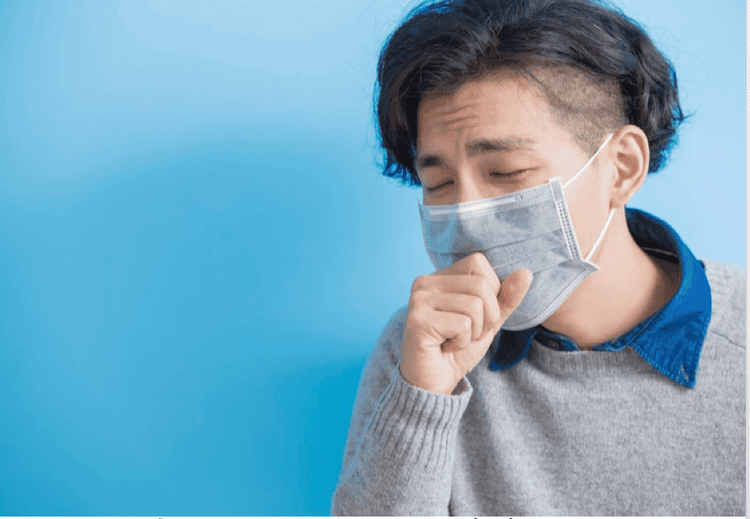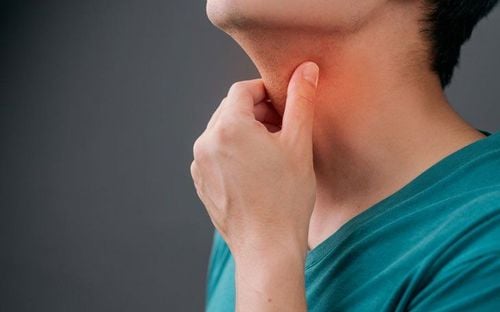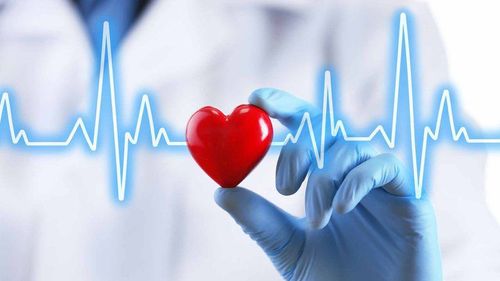This is an automatically translated article.
The article is professionally consulted by Master, Doctor Tran Hong Nhat - Interventional Cardiologist - Cardiovascular Center - Vinmec Central Park International General Hospital. The doctor has more than 10 years of experience in examining and treating interventional cardiovascular diseases.Most of us often overlook the symptoms of difficulty breathing, as well as reassuring ourselves with causes such as old age, stress or nervousness. However, it should be noted that symptoms such as shallow breathing, shortness of breath, shortness of breath, difficulty taking deep breaths or fatigue can be symptoms of a serious medical condition.
1. Identify abnormal breathing rhythm
Shallow breathing: Rapid shallow breathing can occur when you are stressed or anxious. This is the body's physiological response. However, if this condition persists, hyperventilation syndrome will appear, which interferes with respiratory activity.People who experience shallow breathing should not be subjective or self-explain by external factors, psychological stress. What you need to do is to see a doctor to be examined and screened for the cause.
Shortness of breath: When we are physically active, we often find it difficult to breathe, feeling like we can't breathe or lose our breath. Shortness of breath in this case is usually transient and is normal. But if shortness of breath comes on spontaneously, suddenly, for no reason, then you should be careful because it could be a sign of a heart or respiratory problem.
Shortness of breath: Heavy breathing can be seen in cases of iron deficiency anemia. You often find it difficult to take deep breaths, rapid breathing, or chest pain with exertion and exercise.

Fatigue: Fatigue is evidence that the body is not meeting its oxygen needs. The most common cause comes from an ineffective respiratory system or improper breathing habits such as shallow breathing, shortness of breath, chest breathing or mouth breathing. If the feeling of fatigue appears often, you should immediately go to a medical facility to be examined and find out the real cause.
Wheezing: Hearing a hissing sound like wind through a narrow opening when inhaling or exhaling is a characteristic feature of a narrowed airway. Airway foreign bodies or obstructive pulmonary disease are common causes of wheezing. In addition, infectious diseases or allergic reactions can also cause this abnormal breathing sound. Whatever the cause, the first thing to do is seek medical attention when you or a loved one is wheezing.
Trắc nghiệm: Nhịp tim “nhảy nhót” thế nào?
Trong cuộc sống hằng ngày tình trạng rối loạn nhịp tim có thể xuất hiện khi bạn có rối loạn tâm lý, lao động quá sức, căng thẳng, stress, hay sử dụng một số chất kích thích như uống rượu, chè, coffee, hút thuốc lá… 9 câu hỏi dưới đây sẽ giúp bạn kiểm tra kiến thức về tình trạng rối loạn nhịp tim thường gặp.
Bài dịch từ: webmd.com
2. Reasons to be vigilant
Sleep apnea syndrome If you have this condition, you will have episodes of apnea while you sleep. This is a dangerous disease that is often overlooked. People with sleep apnea syndrome have poor sleep quality, often manifest loud snoring while sleeping, often tired, sleepy during the day and not alert, difficult to concentrate.Asthma People with asthma often experience shortness of breath, shortness of breath accompanied by wheezing, coughing and chest tightness. An acute asthma attack usually starts when the body is exposed to allergens such as pollen, smoke, dust, and weather. In addition, asthma may not be related to allergenic factors, being associated with older, overweight, or even obese women.

Carbon monoxide (CO) poisoning Carbon monoxide is a colorless, tasteless gas produced through the combustion of fuels such as gasoline in vehicles, ovens or fireplaces. You can unconsciously inhale from your surroundings. CO makes room with oxygen in the blood, in high concentrations causes hypoxic damage to the brain, leading to symptoms of shortness of breath, confusion, dizziness and mild headaches.
Foreign objects in the airways When food or foreign objects are inhaled into the respiratory tract, the first response to protect the body is to cough. The person may then have symptoms such as wheezing, shortness of breath, or even stop breathing altogether. This is a dangerous condition that can kill the patient if not treated promptly.
Cardiovascular disease The heart and lungs work in harmony with each other. Anything that reduces the heart's ability to pump blood can cause shallow breathing and shortness of breath. In severe cases of heart failure, patients may describe feeling as if they are drowning on land.

3. How to monitor breathing
General ruleThe patient should rest for 15 minutes before being monitored for breathing. Do not use drugs affecting the respiratory system before monitoring. Count the breaths according to the technical steps. There is a log book to record the measurement results clearly and accurately. Notify the doctor when you see the patient has unusual symptoms such as shallow breathing, shortness of breath, shortness of breath. Tools
Clock Pen Notebook or Dashboard Practice
Place patient in supine position, hands on chest. The observer observes the patient's hand rise and fall in response to a breath. Count the number of breaths in one minute. Do not let the patient know that breathing is being monitored because the results may not be objective because the patient intentionally adjusts the breathing rate. Skin and mucosal coloration should be observed simultaneously in the patient, especially at the fingertips, toes, and lips. Record results for abnormalities: + Breathing rate in one minute
+ Breathing depth: shallow, or deep breathing.
+ Breathing rhythm: regular, irregular.
+ There are abnormal symptoms such as shortness of breath, shortness of breath, shortness of breath, contraction of respiratory muscles, cyanosis, fatigue
When experiencing shallow breathing, shortness of breath accompanied by dizziness, the patient should quickly stop what you are doing, sit down in a cool place and ask for help from people around. After the body has stabilized, the patient should visit a doctor to check and determine the cause, from which the doctor will give an appropriate treatment plan.
Vinmec International General Hospital is one of the hospitals that not only ensures professional quality with a team of leading medical professionals, modern equipment and technology, but also stands out for its examination and consultation services. comprehensive and professional medical consultation and treatment; civilized, polite, safe and sterile medical examination and treatment space.
Please dial HOTLINE for more information or register for an appointment HERE. Download MyVinmec app to make appointments faster and to manage your bookings easily.














